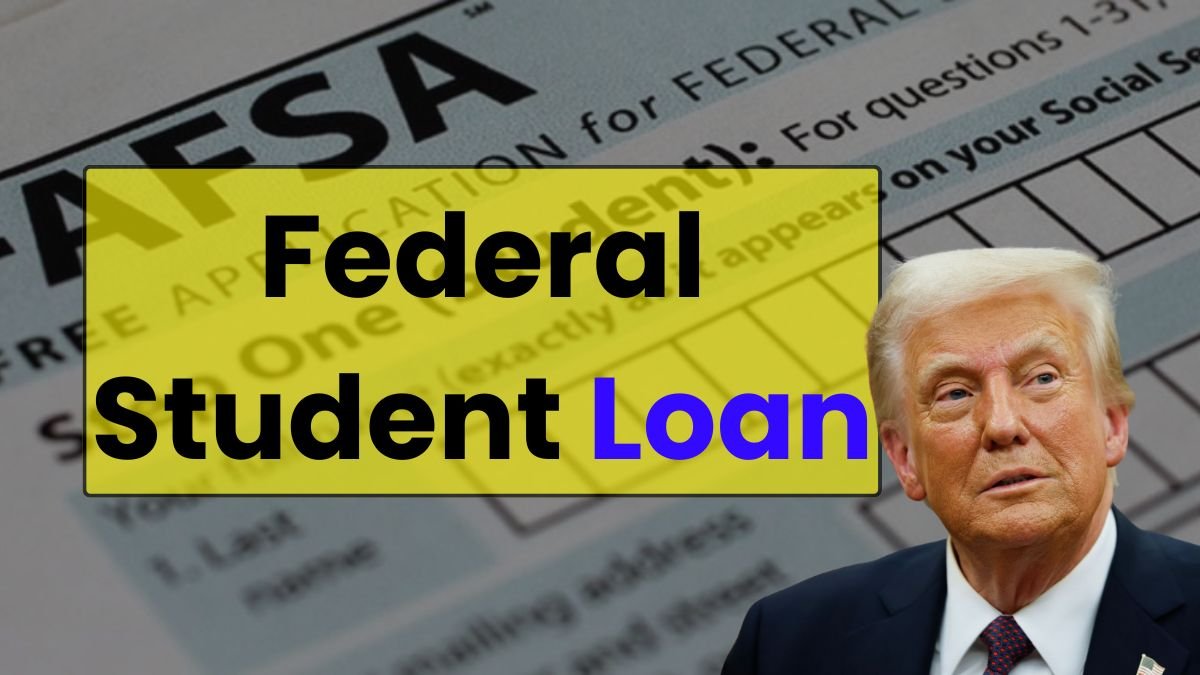Federal Student Loan 2025: Pursuing higher education should be a dream within reach, not a burden that keeps you awake at night. For countless students and parents across the United States, federal student loans have been a lifeline, making college possible when savings fall short.
In this guide, we’ll break down everything you need to know in a warm, human voice—no confusing jargon, no robotic terms, just real help for real people.
What Are Federal Student Loans?
Federal student loans, often called government-backed student loans, are financial aid provided directly by the U.S. Department of Education. They are designed to help students from all backgrounds pay for college or career school.
Unlike private loans, they come with lower interest rates, flexible repayment options, and don’t require a credit check or cosigner in most cases.
Types of Federal Student Loans
Let’s break it down simply. There are three main types of federal student loans under the Federal Direct Loan Program:
1. Direct Subsidized Loans
- For students with financial need
- No interest charged while in school (at least half-time), during deferment, or during the grace period
- Available only to undergraduate students
2. Direct Unsubsidized Loans
- Available to undergraduates and graduate students
- Not based on financial need
- Interest starts accumulating from the day it’s disbursed
3. Direct PLUS Loans
- For graduate students and parents of dependent students
- Helps cover expenses not met by other aid
- Requires a credit check
- Interest begins accruing immediately
Who Can Apply? | Eligibility Made Simple
To be eligible for a federal student loan, you must:
- Be enrolled at least half-time in a qualifying school
- Be in a program that leads to a degree or certificate
- Submit the Free Application for Federal Student Aid (FAFSA®)
Direct Subsidized Loans are for undergraduates with financial need, while Unsubsidized Loans are open to a wider group of students, regardless of income.
Why Choose Federal Student Loans? | Benefits That Matter
These features make federal student loans a compassionate option—especially for students from low-income families or first-generation college attendees.
- No Cosigner Required
- No Strong Credit History Needed
- Flexible Repayment Plans
- Income-Based Payment Options
- Potential for Loan Forgiveness
Loan Limits Explained | How Much Can You Borrow?
Here’s a quick snapshot of what you may be eligible for:
| Student Type | Loan Limit | Subsidized Cap |
|---|---|---|
| Dependent Undergrad | $31,000 | $23,000 |
| Independent Undergrad | $57,500 | $23,000 |
| Graduate Students | $138,500 | $65,500 |
Remember, PLUS Loans can fill any remaining gap up to the Cost of Attendance.
How to Apply for Federal Student Loans
The only step you need to start is completing the FAFSA® form at studentaid.gov.
- It’s 100% free
- Takes about 30 minutes online
- Apply every year you’re in school
What Happens After You Apply?
- You’ll receive a FAFSA® Submission Summary.
- Schools listed on your FAFSA® will review your info.
- Each school will send you a financial aid package, which may include:
- Grants
- Work-study
- Federal student loans
Graduate Student Loans: What You Need to Know
If you’re pursuing a graduate or professional degree, you’re eligible for:
- Unsubsidized Direct Loans
- Grad PLUS Loans
You may also borrow up to your full Cost of Attendance, minus any aid received.
Repaying Your Loan | You’ve Got Options
Fixed Plans:
- Standard Repayment
- Graduated Repayment
- Extended Repayment
Income-Driven Plans:
- SAVE Plan (formerly REPAYE)
- PAYE
- IBR
- ICR
With income-driven repayment, your monthly bill is based on what you earn and family size—sometimes as low as $0.
Can My Loan Be Forgiven?
Yes! Programs like Public Service Loan Forgiveness (PSLF) and Teacher Loan Forgiveness can wipe out your remaining balance if you meet certain criteria.
Your Next Steps
- Complete the FAFSA® – it’s your ticket to federal aid.
- Review offers from schools and compare loan options.
- Choose federal loans first before considering private lenders.
- Stay informed about your repayment plan and rights.

